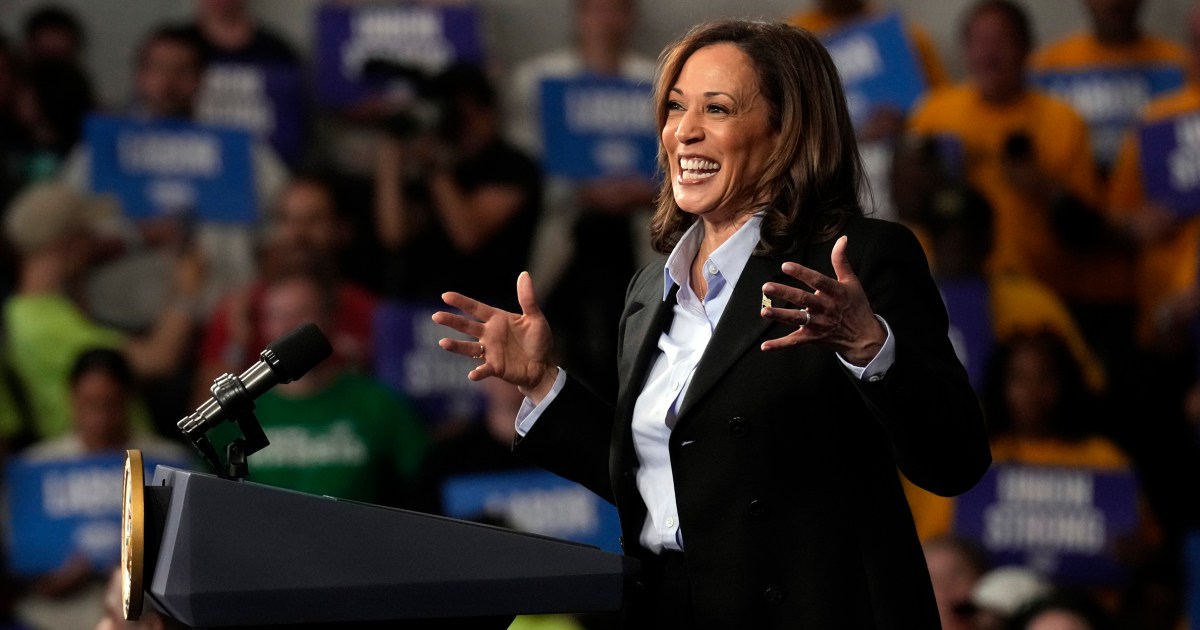Traditionally, once Labor Day is over, American presidential elections enter a nine-week home stretch. It’s a point at which campaigns start to hone their messaging; voters start weighing their choices more seriously; candidates share a debate stage; and races crystalize.
And, of course, the public is inundated with all kinds of polling data.
It’s no secret that the latest surveys have buoyed Democratic hopes. The latest USA Today/Suffolk poll, for example, found Vice President Kamala Harris leading Donald Trump, 48% to 43%. Those figures came on the heels of the latest ABC News/Ipsos poll, which found the Democratic nominee ahead among likely voters, 52% to 46%. (As always, click the links for information on the surveys’ methodology and margins of error.)
But a Politico report from the holiday weekend touched on a detail that’s worth keeping in mind as the data makes the rounds.
Because of Republicans’ advantage in the Electoral College, a race that Harris leads nationally by between 2 and 4 percentage points, on average, is the equivalent of a knife fight in a phone booth, and it’s set to be decided in a smaller-than-usual number of states.
I can appreciate why this might seem counterintuitive. After all, in a normal democratic election in a normal democratic system, candidates who win the most votes prevail. In American presidential elections, it’s vastly more complicated, and candidates who receive fewer votes can — and occasionally do — take office, while candidates who receive more support end up with nothing but disappointment.
It’s one of the reasons 2024 polling that shows Harris with a modest national lead comes with caveats, including one important detail: Trump’s Electoral College advantage is so significant that small polling leads for Harris are, for all intents and purposes, deficits.
Writing for The Washington Post four years ago, Paul Waldman explained: “Turnout projections are running at around 150 million [in 2020], which would mean that … Biden could win by 3 million to 4.5 million votes and still have less than a 50 percent chance of becoming president.”
As outlandish as that sounded, (a) it was entirely accurate; and (b) it remains true in the 2024 cycle.
Indeed, MSNBC’s Chris Hayes added a couple of weeks ago, “I really feel duty bound to keep pointing out to people that the Electoral College is an insane unworkable mess and creates wild distortions in the single most important election in the country that literally don’t exist in any other election.”
Many Americans might think Electoral College/popular-vote splits are incredibly rare and not worth worrying about. After all, most of the time, the candidate backed by the most voters actually becomes president.
But it’s not quite that simple. In fact, in five presidential elections, the candidate who received less public support was declared the winner, and two of the five instances have happened in the 21st century.
It’s precisely why Harris isn’t popping any champagne in response to polls showing her with modest leads: Even if the surveys are largely accurate, our system makes it easier for Republicans to win the White House, even when they receive fewer votes.
The Democratic candidate will need to try to run up the score, not just to deliver a historic rebuke to a corrupt rival, but to ensure her inauguration.
I remember one prominent political figure declaring not too long ago, “The Electoral College is a disaster for a democracy.” It’s hardly an unreasonable point.
That prominent political figure was Donald Trump.
This post updates our related earlier coverage.


Leave a Reply